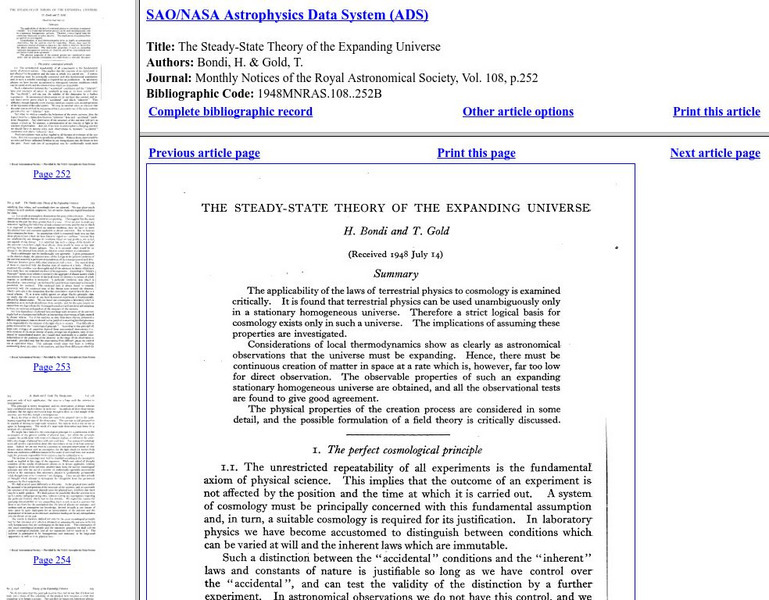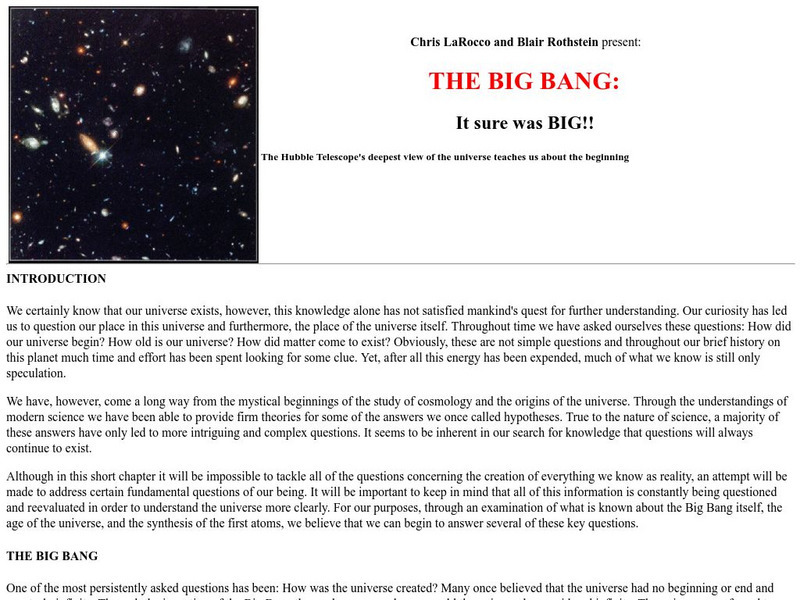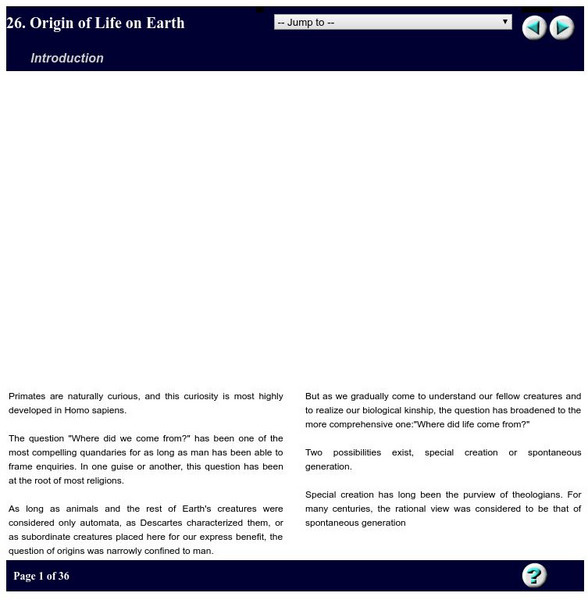Hi, what do you want to do?
Curated OER
Mythology - What Is It?
Students explore Greek mythology. In this mythology lesson plan, students discuss and define mythology. Students view pictures and associate them with the correct Greek myth. Students answer trivia questions about their knowledge for...
Curated OER
Plate Tectonics
Students watch a video about plate tectonics. in this Earth Science lesson, students watch a video clip from Bill Nye about Continental Drift and Plate Tectonics. They make a slight crack in a hard boiled egg and manipulate the egg to...
The New York Times
The Cold War: Crossword
This crossword puzzle focuses on clues related to The Cold War. It also has unrelated clues that would be a challenge to middle schoolers, but should be manageable to secondary learners; particularly juniors taking US history. There are...
Curated OER
Learning from history: can it save lives?
Students research and document lessons learned from this disaster, then compile and synthesize information. They write effectively for public education purposes and use visual communications tools
Curated OER
Blending Fiction and Nonfiction to Improve Comprehension and Writing Skills
Students explore a content area by reading both fiction and nonfiction texts on the topic. They do more research online about the topic. After comparing the texts, they create their own written original work, using both narrative and...
The History Cat
The History Cat: Charles Darwin & the Theory of Evolution
Outlines the events of Charles Darwin's own evolution into a scientist and how he developed his Theory of Evolution. Also discusses the immense resistance to his ideas that he faced from all fronts. Even today, many people refuse to...
Harvard University
Royal Astronomical Society: Steady State Theory of an Expanding Universe
In-depth research about the steady-state theory of the expanding universe found within a bibliographic database of astronomical literature. Learn about the theory that asserts that new matter is continuously created as the universe expands.
Khan Academy
Khan Academy: Arts and Humanities: Art of Asia
A landing page for a course on the art history of Asia.
University of Michigan
University of Michigan: The Big Bang It Sure Was Big!
A detailed examination of "what is known about the Big Bang itself, the age of the universe, and the synthesis of the first atoms."
PBS
Pbs Learning Media: Relativity and the Cosmos
This illustrated essay from the NOVA Web site introduces the basic concepts of Einstein's General Theory of Relativity and what we know about cosmology as a result.
National Gallery of Art
National Gallery of Art: Monet's Waterscapes
Students will learn the color theory and techniques that guided Claude Monet's impressionist painting and apply those techniques to the creation of their own works of art.
Science Struck
Science Struck: What Is Gravity and How Does It Work
A very detailed look at gravitational force and the many theories that have been put forward to try to explain it. Includes lots of illustrations.
Other
The Days of Genesis 1
You must scroll down to the section titled "The Early Church and the Day-Age Theory" to begin specific reading on St. Augustine's interpretation of Genesis 1; however, the information leading up to it is valuable as well. Provides...
University of Oxford (UK)
University of Oxford: Origin of Life on Earth
Where did life come from? Features a 36-page exploration of the possibilities of special creation or spontaneous generation.
Khan Academy
Khan Academy: Arts and Humanities: Art of Africa
A landing page for a course on African art found in regions and in individual countries.
BiologyWise
Biology Wise: Arguments Against Evolution
Presents a table showing the timeline of theories of evolution, a description of Darwin's theory of evolution, and a list of arguments attacking the concept of evolution.
Khan Academy
Khan Academy: Arts and Humanities: Looking at Art
Course covering why art matters, elements of art, and principles of composition.
PBS
Nova: History of the Universe
This interactive timeline provides information on the big bang as well as other major events of universe evolution. It also provides predictions about the universe's future.
NPR: National Public Radio
Npr: Taking Issue: Evolution and Religious Faith
Learn what five different religions have to say about the shaping of life and evolution. [August 8, 2005]
PBS
Pbs Learning Media: Discovering Air
Our understanding about the air we breathe has changed dramatically through time. This illustrated timeline from the NOVA Web site tracks the changing thought on air and the creation of the Periodic Table of the Elements.
Other
Evolution and Creation
A short discussion covering the controversy between those who believe in evolution and the "creationists." The author suggests that it is possible to be a Christian and still believe in evolution.
Other
Carbon 14 Dating
Seven pages all about Carbon 14 Dating. Information on half-life, Carbon 14 used to date specimens and artifacts, limitations, charts and graphs. Michael E. Brown Ph.D. contests that the limitations of Carbon 14 dating support the theory...
Lawrence Berkeley National Laboratory
Berkeley Lab: Expansion of the Universe
Brief explanation of the creation and expansion of the universe otherwise known as the Big Bang.
Other
Ad Cracker
In this website students can learn to create an international advertising agency. They will learn to write a brief, create a brand and position the product. They will also be introduced to the fundamentals of creative writing as well as...






















